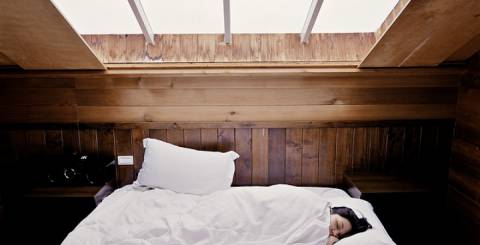Why Sleeping in a Colder Room is Good for You?

The temperature of our surroundings can have a profound effect on our health and our quality of sleep. Some studies have shown our sleep to be calmer in colder temperatures, while others have suggested it can even be beneficial for preventing disease, and also delaying the aging process by affecting the body’s metabolism.
Falling Asleep Faster
One of the most well-studied benefits of sleeping in colder temperatures is that it helps us fall asleep faster. This comes down to the fact that our bodies naturally lower their temperature when getting ready to fall asleep. This means that lower ambient temperatures signal to the brain that it is time to rest. In contrast to this, warmer temperatures will block this signal and will keep you awake for longer.
Leads to Improved Sleep Quality
It’s no coincidence that most people are covered in sweat when waking up at night - one way to prevent this is by lowering the temperature of the room you sleep in. Colder ambient temperatures also have the potential to improve your quality of sleep. Several scientific studies have shown that people who slept in colder temperatures spent more time in deep-sleep, and woke up less at night than people who slept in slightly warmer temperatures.
Colder temperatures have also been found to stimulate the production of the hormone melatonin, which encourages sleep. Sleeping in lower temperatures can, therefore, be an effective approach to treating insomnia.
Anti-Aging
Sleep is essential for both to keep our mind, as well as our bodies young. As mentioned before, sleeping in colder temperatures stimulates the production of the hormone melatonin in our body. Besides improving our sleep quality, it has also been shown to have anti-aging properties.
Increased levels of melatonin have also been linked with improvements in mood and general wellbeing, as well as the storage of so-called “beige fat” which causes the body to burn additional calories and helps to prevent metabolic diseases in the long run.
How to Cool Down Your Room?
There are several effective ways to cool down your room and improve the quality of your sleep. Sleeping naked is the most obvious of these, and will lead to lower body temperature when sleeping. Opening the window and allowing fresh air into your room is also essential. Air circulation is crucial, and therefore having a fan in your bedroom can also help bring the air temperature down.
Memory foam mattresses may be comfortable, but have the unfortunate property that they trap a lot of heat, which can make them uncomfortable, particularly during the summer months. Cooling gel bed toppers have a cooling effect on your bed and can help keep it cold even during the summer.
On that note, investing in good cooling sheets can also be beneficial. Avoiding synthetic materials that trap heat, such as polyester, will also help keep your bed cool.
Bed Cooling Systems
The most effective method though is investing in an all-encompassing bed-cooling system. Although there are many different ones on the market, the chiliPAD Sleep System is particularly effective and high in-demand. This popular gadget to cool down your bed is available by Chili Technology and will guarantee you a calm and good night’s sleep!
Optimum Sleeping Temperatures
Several scientific studies have investigated the effect of temperature on our ability to fall asleep, as well as our sleep quality. These studies revealed that our optimal sleeping temperature is between 15.5 and 19.5 degrees Celsius (60 to 68 degrees Fahrenheit).
During our natural sleep cycle, physiological changes begin to occur, which cause us to feel tired. Among these changes is the release of a variety of hormones, as well as small decreases in core body temperature.
Similar Articles
Most people think health problems start suddenly. One day you feel fine, the next day something is wrong. In reality, most health issues develop slowly .They grow quietly in the background while life keeps moving.
The start of a new year is a natural time to pause, reflect, and think about how you want to feel in the months ahead. For those over 60, a fresh start does not mean setting unrealistic resolutions or making drastic changes.
Picture this: You're parked at your workspace, battling to focus on what should be a straightforward five-minute task. That afternoon slump? It's demolishing you today.
Joint pain and arthritis are common health issues that tend to become more intense during the winter season
Discover the benefits, challenges, and future of locum medical jobs. Learn how locum recruitment agencies support flexible, diverse career opportunities for healthcare professionals seeking dynamic work environments.
Burnout in the healthcare environment is a significant and growing crisis.
NAD+ therapy restores cellular energy, enhances metabolism, and promotes anti-aging by supporting DNA repair and improved overall vitality.
Seasonal Affective Disorder (SAD) is a type of depression linked to seasonal changes, most commonly seen during the late fall and winter months when sunlight exposure decreases
Enhance sleep comfort and support with a mattress topper queen. Discover how the right topper improves pressure relief, temperature control, and rest.









